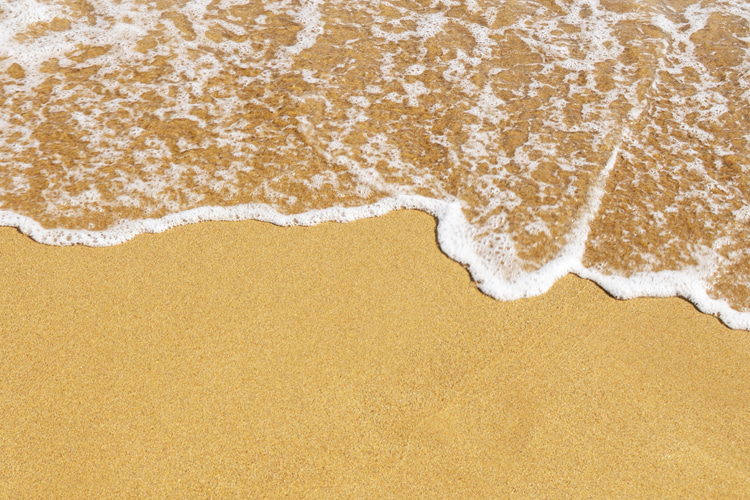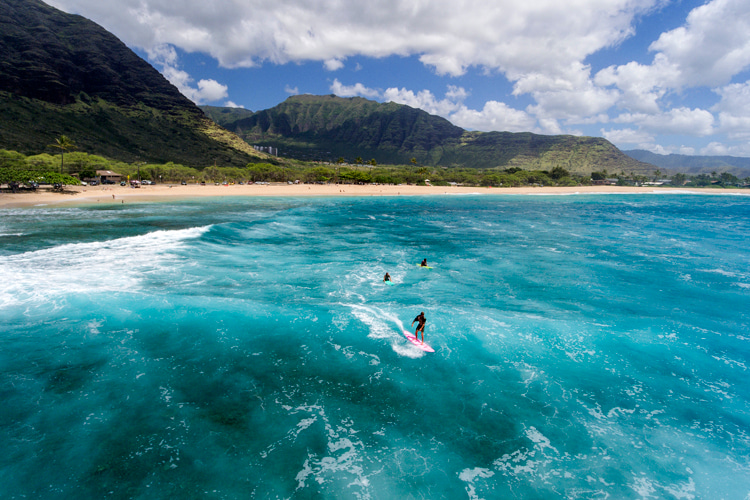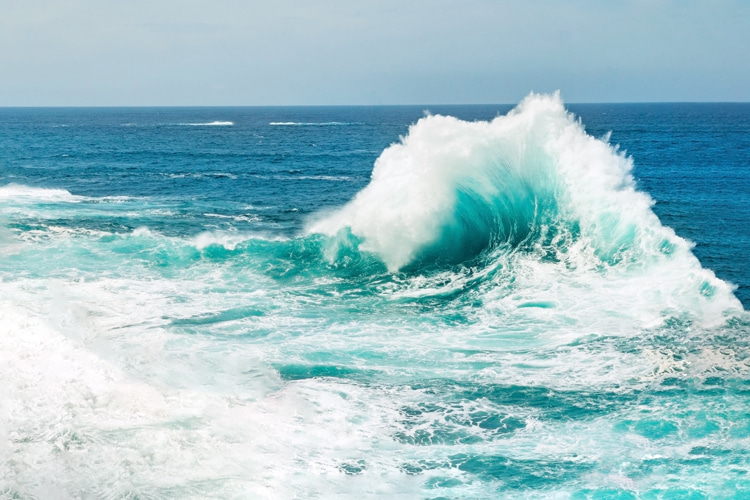Waves are a dynamic force that is often created in the open ocean thousands of miles away from the shore and breaks near the coastline.
From an oceanographic and coastal morphologic perspective, the power of a wave can be broken down into two main categories: destructive waves and constructive waves.
A constructive wave is a low-energy wave that breaks in wide and flat beaches, especially during low tide.
It is often a small height wave characterized by a strong swash and a weak backwash.
With a low frequency - around 6-8 per minute - the constructive wave will carry sediments and sand up the beach.
On the opposite side of the spectrum, the destructive wave is a high-energy wave that breaks in steep and narrow beaches, especially during low tides.
It is often a high-height wave characterized by a weak swash and a strong backwash.
With a high frequency - around 10-14 per minute - the destructive wave will remove sediments and sand from the beach, making it smaller in size.
In a constructive wave, the swash is necessarily stronger than the backwash, and in a destructive wave, the backwash is obviously stronger than the swash.
The former adds sediments and increases the beach; the latter removes sand grains, small rocks, and shells from the beach.

Swash Vs. Backwash
Swash and backwash have a critical role in the formation of beaches.
So, swash is the movement of water that is washed up the beach when a wave breaks and is often observed as a foaming mass of moving water.
In the opposite direction, the backwash is the water that runs back down the beach following the swash.
In most cases, the swash process is faster and shorter than the backwash, and while the direction of the swash varies with the wind, the backwash is always perpendicular to the shoreline.
There are divergences when it comes to the terminology used for the process that takes place at beaches when a wave breaks.
Some scientists call both the uprush and backwash movements swash.
Others will refer to the uprush as swash and the downrush as backwash.

The Creation of the Backwash Wave
We've seen that the backwash is the backward offshore flow, or movement, of water down the beach that takes place after the swash.
"All the energy contained in the wave is dissipated in turbulence and in the kinetic energy of the water," notes J. B. Zirker, author of "The Science of Ocean Waves."
"The last, dying gasp of the wave is a thick layer of water that rides up the beach in the 'swash zone' to a high point, stops, and drains back to the sea."
This backwash water has to go somewhere, and that is precisely when a backwash wave starts forming.
Whenever a large mass of water goes back to the ocean, it can create a new wave traveling in the opposite direction of regular ocean waves.
So, as the backwash flows toward the sea, it creates a new wave.
This new wave carries enough energy to make it progress over a more or less distance and for a more or less period of time.
These backwash waves will often encounter incoming waves, resulting in a crash-and-splash effect that sends water up in the air.
Backwash waves are nothing but counter or reverse waves that move toward the ocean instead of traveling toward the coast.
A backwash wave may be dangerous to beachgoers who are not comfortable in high surf or turbulent seas but it is also a rare and unusual wave-riding opportunity for surfers.
Despite behaving differently, square waves can also trap swimmers and surfers, putting their lives in jeopardy.
